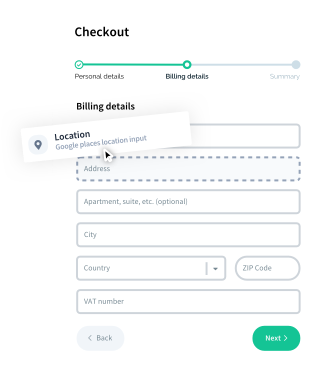ElementRequired
Basic Usage
<ElementRequired> component can be used in a <Vueform> component:
Properties
Properties include data, computed and inject properties of the component. You can use them by reaching the element's Vue component instance via form$'s el$(path) method or directly via this in options API or el$ in Composition API.
visible
- Type:
boolean - Group:
computed
Whether the required sign (*) should be visible.
Size
- Type:
string - Group:
inject
The size of the component.
View
- Type:
string - Group:
computed
The name of the resolved view for the component. This one should be used to determine the component's view in class functions.
template
- Type:
object - Group:
computed
The component's template.
classes
- Type:
object - Group:
computed
The component's classes.
theme
- Type:
object - Group:
inject
The global theme object, which contains all the default templates and classes.
form$
- Type:
Vueform - Group:
inject
The root form's component.
el$
- Type:
VueformElement - Group:
inject
The parent element's component.
Slots
Slots can be used inline or in slots option object when used in schema:
<template>
<Vueform>
<ElementRequired ... >
<template #{slot-name}="scope">
<!-- ... --->
</template>
</ElementRequired>
</Vueform>
</template><script>
import { Vueform, useVueform } from '@vueform/vueform'
export default {
mixins: [Vueform],
setup: useVueform,
data: () => ({
vueform: {
schema: {
element: {
type: 'element-required',
slots: {
{slotName}: // implementation
}
}
}
}
})
}
</script>

